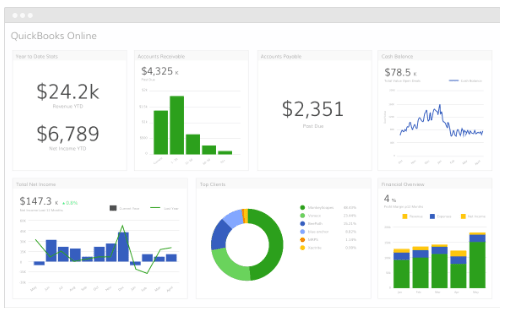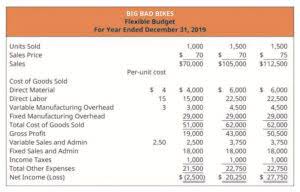
A liability is anything that’s borrowed from, owed to, or obligated to someone else. It can be real like a bill that must be paid or potential such as a possible lawsuit. adjusting entries A company might take out debt to expand and grow its business or an individual may take out a mortgage to purchase a home. Companies of all sizes finance part of their ongoing long-term operations by issuing bonds that are essentially loans from each party that purchases the bonds.
- They are vital components of a balance sheet, which is one of the primary financial statements used by stakeholders to assess a company’s performance and sustainability.
- A retailer has a sales tax liability on their books when they collect sales tax from a customer until they remit those funds to the county, city, or state.
- Financial liabilities can be either long-term or short-term depending on whether you’ll be paying them off within a year.
- They are recorded on the company’s balance sheet as current liabilities and adjusted at the end of an accounting period.
- He has a CPA license in the Philippines and a BS in Accountancy graduate at Silliman University.
- If a portion of a long-term debt is payable within the next year, that portion is classified as a current liability.
Understanding Liabilities
- The amount of taxes a company owes might fluctuate based on its profitability and tax planning strategies.
- The current portion of long-term debt due within the next year is also listed as a current liability.
- Businesses need to mark these transactions as “taxable under RCM,” ensuring they are accurately represented as RCM liabilities in GSTR-1.
- In accounting, operating expenses are recorded as liabilities until they are paid off.
- In today’s uncertain marketplace, accurate, timely reporting of contingencies helps business owners and other stakeholders manage potential risks and make informed financial decisions.
- Understanding liabilities is essential for anyone involved in corporate finance, from a business owner to a shareholder, as they indicate the financial health and obligations of a business.
For example, if an unregistered business in India imports digital services, it must first register under GST and then remit the RCM tax, fulfilling legal obligations. Illustrative ExamplesTo clarify, suppose a business pays for services on July 1 but receives an invoice dated May 1. For services, the time of supply is the earliest of payment date, 60 days from invoice issuance, or self-invoice date.
The long-term debt ratio

This list covers the primary cases where RCM applies under GST in India, ensuring compliance by making the recipient liable to pay the tax directly to the government. In today’s uncertain marketplace, accurate, timely reporting of contingencies helps business owners and other stakeholders manage potential risks and make informed financial decisions. Contact us for help categorizing contingencies based on likelihood and measurability and disclosing relevant information in a clear, concise manner. If the company can reasonably estimate the cost of warranty claims based on historical data, it should record a warranty liability.
- Shaun Conrad is a Certified Public Accountant and CPA exam expert with a passion for teaching.
- Companies of all sizes finance part of their ongoing long-term operations by issuing bonds that are essentially loans from each party that purchases the bonds.
- However, other liabilities such as accounts payable often don’t have interest charges since these are due in less than six months.
- Contingent Liabilities are obligations that may or may not occur.
- The operating cycle refers to the period of time it takes for the business to turn its inventory into sales revenue and then back into cash, which helps cover these expenses.
Long-term liabilities
- Michelle Payne has 15 years of experience as a Certified Public Accountant with a strong background in audit, tax, and consulting services.
- A liability is a legally binding obligation payable to another entity.
- Companies typically will use their short-term assets or current assets such as cash to pay them.
- This is often used as operating capital for day-to-day operations by a company of this size rather than funding larger items which would be better suited using long-term debt.
- If you’re doing it manually, you’ll just add up every liability in your general ledger and total it on your balance sheet.
- Most state laws also allow creditors the ability to force debtors to sell assets in order to raise enough cash to pay off their debts.
- As the company makes payments on the mortgage, the principal portion of the payment reduces the mortgage payable, while the interest portion is accounted for as an interest expense.
They can also make transactions between businesses more efficient. A wine supplier typically doesn’t demand payment when it sells a case of wine to a restaurant and delivers the goods. It invoices the restaurant for the purchase to streamline the drop-off and make paying easier for the restaurant.

What Are Some Common Examples of Current Liabilities?

The term can also refer to a legal obligation or an action you’re obligated to take. Assets are what a company owns or something that’s owed to the company. They include tangible items such as buildings, machinery, and equipment as well as intangibles such as accounts receivable, interest owed, patents, or intellectual property. The outstanding money that the restaurant owes to its wine supplier is considered a liability. These are due for settlement in more than one year, and almost always involve long-term borrowings. Here are a few quick summaries to answer some of the frequently asked questions about liabilities in accounting.

Liability accounts

A company with too many liabilities compared to its assets may face cash flow problems or increased financial risk. Understanding a company’s liabilities can also help assess its ability to meet debt obligations and the potential for future growth. Assets and liabilities are two fundamental components of a company’s financial statements. Assets represent resources a company owns or controls with the liability account examples expectation of deriving future economic benefits. Liabilities, on the other hand, represent obligations a company has to other parties.

